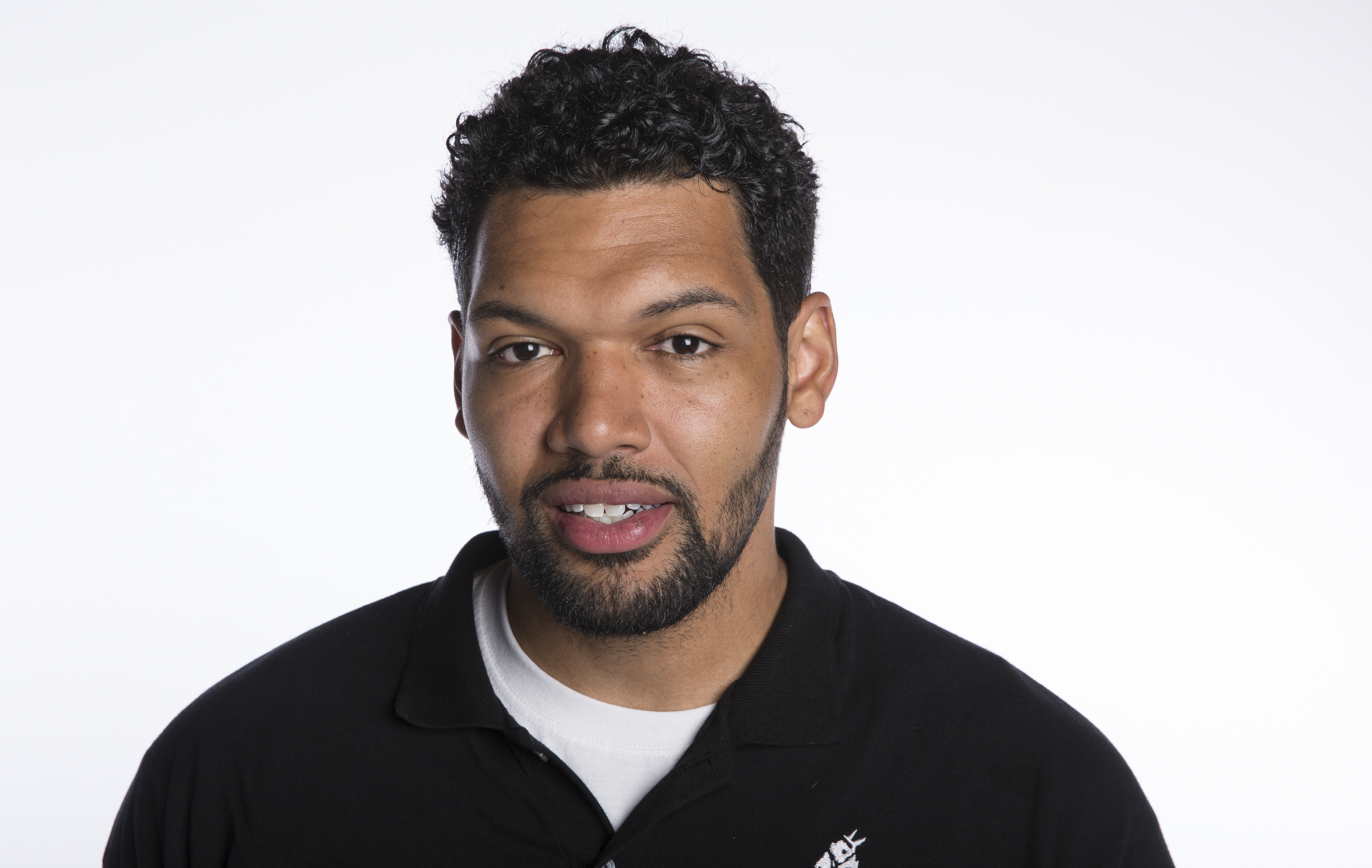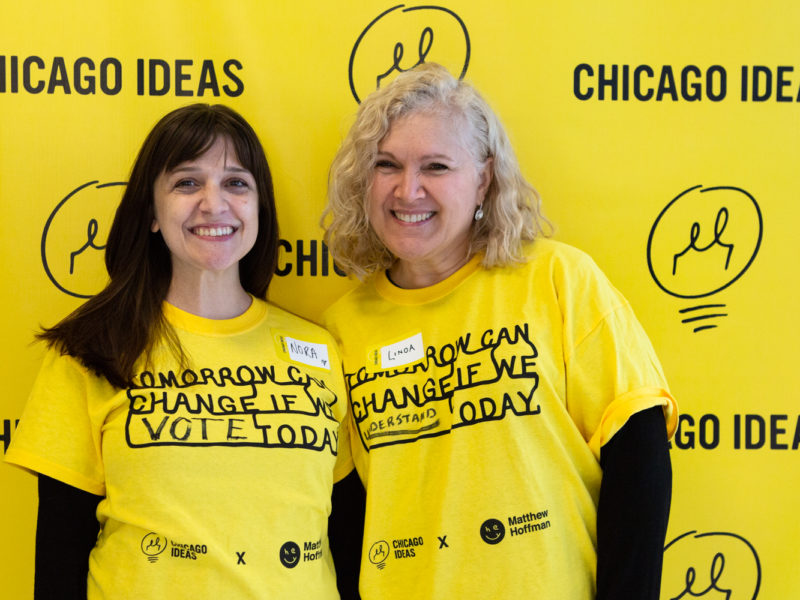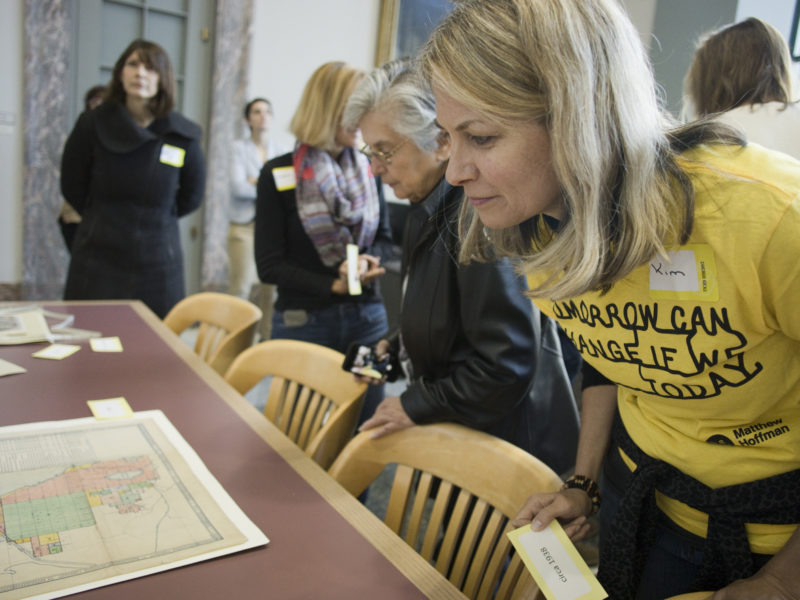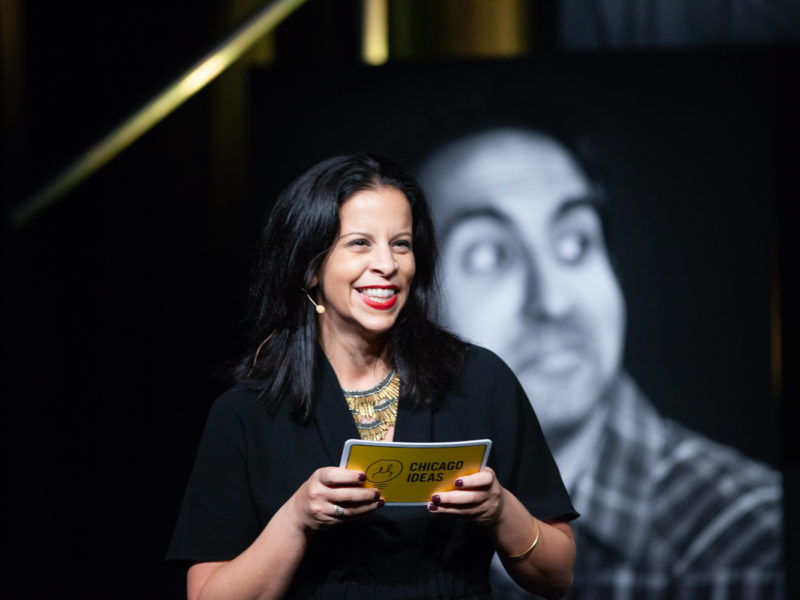
Meet the Stars of Chicagoland: 2013 CIW Artist-in-Residence Hebru Brantley
2013 CIW Artist-in-Residence Hebru Brantley took inspiration from CIW YOU(th) ambassadors to develop the outdoor art installation “The Watch.” The creation of the 16-figure art installation—which invited passers-by to Pioneer Court Plaza at 401 North Michigan Ave. to consider Chicago’s inner-city youth—is featured heavily in Thursday’s installment of CNN’s Chicagoland. We sat down with Brantley to learn more about his experience as artist in residence, what it was like to bring the signature characters of his art—the Fly Boy and Fly Girl—to life in downtown Chicago and how he hopes Chicago will change for the better.
What was your experience working as CIW’s Artist-in-Residence and collaborating, in essence, with the CIW YOU(th) ambassadors on “The Watch”?
I think that first and foremost just being given the opportunity to create the project that I did was phenomenal and allowed for a challenge. [I was able] to create this sort of meaningful installation and activation spaced around something that was very personal for me, which is Chicago’s youth. I think I pulled a lot from the kids, if not anything more than the strength they have and the power that I don’t think a lot of them really realize that they have. It is just very inspiring for me to be a part of it, to be around them, to get to know them, to hear their stories and to reaffirm my mission to inspire with my work. Watching the reactions—not only from the kids that were directly involved in the project but other kids and other adults—was a huge payoff for me. And it helped me grow as an artist and as a storyteller because of the experience.
What it was it like to translate the story of the Fly Boy and Fly Girl—characters you had created well before your participation in CIW—into the art installation “The Watch”?
It makes it more of a real thing. When you do sculptures or anything three-dimensional, the scale of what you’re saying and what you’re doing changes. It grows. It becomes something you can interact with, whether it is up close and personal.
It’s been a project I’ve wanted to do for a long time. When the opportunity came with Chicago Ideas Week, I could take my basic premise and concept and attach it to the mission of CIW. It worked out sort-of seamlessly. I always wanted to be able to do public activations. When you do things of that nature, your work is seen more than it would be in a gallery or a museum. You have thousands upon thousands of people commuting past these locations every day. Within their travels, they see at least one or two glimpses. As an artist, it was always something I wanted to do and raise a call and have a response. I think for the most part [“The Watch”] was perceived very well. People got it.
Does any part of your CIW experience stand out to you?
The one that stands out to me the most was one of the YOU(th) ambassadors, Joseph [Jones]. Hearing his story [at the Edison Talks] and being young as he is—commanding the entire auditorium the way that he did caught me off guard. I was very proud and sad; it took you on a roller coaster of emotion when he was telling his story. It goes to show you the power in application. From hearing the stories of how he used to be to where he is now is pretty astonishing. It goes to the point that these kids are not all lost causes; they just lack certain guidance and certain influence and certain experiences, and once they have it, they can pull off phenomenal feats and conquer a lot of things. But it takes those people like [Imran] Kahn to find those deemed as lost causes and pull them up a little bit and show them another way.
Chicagoland depicts many of our city’s problems—gun violence, a lack of access to equal educational opportunities, etc. Given that, what is your hope for Chicago moving forward? What would you like to see change?
My only one true hope for the city is that the people in Springfield can get their act together and do something about this gun violence, first and foremost. It is ridiculous, especially given what happened this past Easter weekend. I think it just needs to start with the gun violence. When you remove that instantaneous problem solver, you create an opening for a different sort of conflict resolution.
Q&As are edited for clarity and length.





